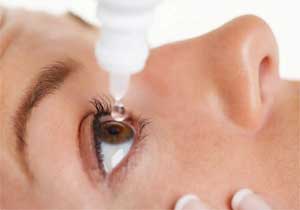- Home
- Editorial
- News
- Practice Guidelines
- Anesthesiology Guidelines
- Cancer Guidelines
- Cardiac Sciences Guidelines
- Critical Care Guidelines
- Dentistry Guidelines
- Dermatology Guidelines
- Diabetes and Endo Guidelines
- Diagnostics Guidelines
- ENT Guidelines
- Featured Practice Guidelines
- Gastroenterology Guidelines
- Geriatrics Guidelines
- Medicine Guidelines
- Nephrology Guidelines
- Neurosciences Guidelines
- Obs and Gynae Guidelines
- Ophthalmology Guidelines
- Orthopaedics Guidelines
- Paediatrics Guidelines
- Psychiatry Guidelines
- Pulmonology Guidelines
- Radiology Guidelines
- Surgery Guidelines
- Urology Guidelines
Eye drops with biosynthetic enzyme promising treatment for dry eye disease

USA: A phase I/II clinical trial of a new enzyme-based treatment has shown promising results for the treatment of severe dry eye disease. The study, published in the journal Translational Vision Science and Technology found that participants who received the new treatment reported less eye discomfort, reduced signs of disease and healthier corneas.
Sandeep Jain, professor of ophthalmology and visual sciences in the University of Illinois at Chicago College of Medicine, and colleagues determined whether eye drops containing a biosynthetic form of an enzyme called DNase have the potential to reduce signs and symptoms of dry eye disease (DED), and compared it with eye drops without the enzyme.
"This is the first clinical trial in humans using DNase eye drops for treating ocular diseases," write the authors.
Dry eye disease is characterized by inflammation of the cornea, the transparent outer layer of the eye and dysregulation of tears production. In severe dry eye disease, which often accompanies diseases such as Sjogren's syndrome and ocular graft-versus-host disease, the inflammation in the corneal tissue can become extreme enough to cause disabling eye pain and sensitivity to light.
"In dry eye disease, several things happen," Jain explained. "There is an increase in the number of white blood cells called neutrophils that gather on the surface of the eye. Neutrophils release DNA which forms webs on the cornea called neutrophil extracellular traps, which cause inflammation of the ocular surface and attract additional neutrophils in a vicious cycle."
Normally, enzymes present in tears chop up and clear DNA and other debris on the cornea, but in patients with dry eye disease, there is not enough DNase to clear the material.
In this trial, the researchers enrolled 47 participants with severe dry eye disease. They were randomized to receive eye drops containing either DNase or a placebo formulation and instructed to administer one drop of the solution to each eye four times per day for eight weeks. The patients' symptoms were evaluated through questionnaires and the degree of corneal damage and amount of DNA webs and other pro-inflammatory material on the surface of the eye were measured before and for the duration of the study.
About half the participants had a diagnosis of Sjogren's syndrome and 17% had graft-versus-host disease -- both of which are associated with significant deficits in tear production. Forty-one participants completed the trial.
Also Read: Poor air quality may worsen dry eye disease conditions
They found that:
- Tolerability and adverse events were similar in the placebo group and DNase group.
- Within the DNase group (but not placebo group), corneal staining showed a statistically significant and clinically meaningful reduction at week 8 compared with baseline.
- Ocular Surface Disease Index [OSDI] score also showed a significant median reduction of 27.3 at week 8 compared with baseline within the DNase group.
- The median reduction in corneal staining and mucoid debris/strands was significantly greater in the DNase group as compared with the placebo group.
- In the DNase group, the median reduction in OSDI (−20.75) was more than the placebo group (−8.43); however, the difference between groups was borderline significant.
Also Read: Topical cyclosporine is new treatment for dry eye disease
DNase is currently approved by the U.S. Food and Drug Administration to treat cystic fibrosis. Its use for treating severe dry eye that doesn't respond to other medications is still considered experimental by the FDA.
"The burden of severe dry eye is much greater than just having an occasional feeling of dryness," Jain said. "It can severely compromise the quality of life to the point of disability and can compromise a person's vision. There are currently only two approved drugs to treat dry eye, and they don't work for everyone, especially those with severe disease, so having a new drug that can treat the disease is very important."
"Data generated in this clinical trial show that DNase eye drops appear to be safe and potentially beneficial in treating severe tear deficient DED. The results of this clinical trial support the further development of DNase eye drops for treating DED possibly by the degradation neutrophil extracellular traps (NETs) from the ocular surface," concluded the authors.
For detailed study follow the link: doi:10.1167/tvst.8.3.10

Disclaimer: This site is primarily intended for healthcare professionals. Any content/information on this website does not replace the advice of medical and/or health professionals and should not be construed as medical/diagnostic advice/endorsement or prescription. Use of this site is subject to our terms of use, privacy policy, advertisement policy. © 2020 Minerva Medical Treatment Pvt Ltd